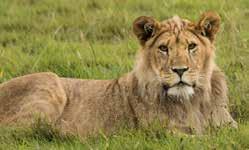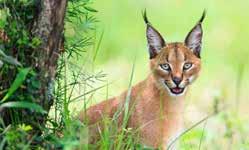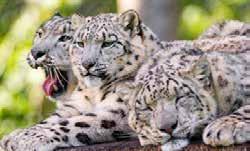
7 minute read
DR KAS HAMMAN - THE CAT FAMILY
BY : Dr Kas Hamman
The Carnivora is an order of placental mammals consisting of the most recent common ancestor of all cat-like and dog-like animals. Members of this group are formally referred to as carnivorans, and have evolved to specialize in eating flesh. The order represents the fifth largest order of mammals, comprising at least 279 species.
Advertisement
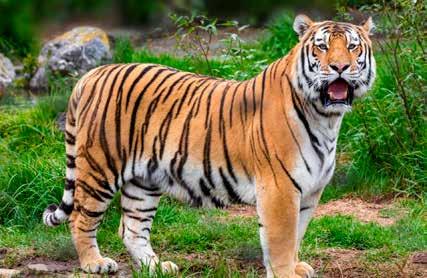
Evolution of the amazing Cat Family
Today carnivores occur on every major landmass around the world in a variety of habitats, ranging from the cold polar regions to the hyper-arid region of the Sahara Desert to the open seas. Carnivores come in many different body forms and shapes and sizes. The Carnivora can be divided into two subclades namely the cat-like Feliformia and the dog-like Caniformia, which are differentiated based on the structure of their ear bones and cranial features. The feliforms include families such as the cats, the hyenas, the mongooses and the civets. The majority of feliform species are found in the Old World, though the cats and one extinct genus of hyena have successfully dispersed and diversified into the Americas. The caniform species include wolves, dogs, bears, raccoons, weasels, and seals. Members of this group are found worldwide with an incredible diversity in their diet, behaviour, and morphology.
Typical felid characteristics
The felids have a diet based on meat proteins and, among all the carnivores, their morphology is highly specialized in predation, and therefore the skeleton and muscular morphology of felids have evolved with adaptations that allow high speed and extreme agility, associated with great power. The slender but robust limbs support a large thorax, a thin belly, and a highly flexible spine. The hind legs are longer than the front legs and have strong bones to which powerful muscles are attached, especially the thigh muscles which allow these animals to accelerate swiftly and enable extraordinary jumping skills. With the marked exception of the lion, most cats are variably solitary in their behaviour, although cheetah may live in small bachelor groups of brothers or subadults with their mother. Today all living felids are thoroughly cat-like in appearance and behaviour. Most have long tails, sharp and retractable claws, large and pointed canine teeth, and cheek teeth that are largely adapted to eat meat and soft tissues. We are all familiar with the penetrating and irritating meow-sounds that domestic cats use to communicate at night during mating behaviour. Wild felids use various vocalisations for communication, especially intra specific. This includes roaring in large felids, meowing and purring, in many small wildcats, hissing, snarling, squealing, snapping, or clicking and grunting. When calling her young, the female cheetah makes chirping sounds. Sounds serve as territorial signals, sexual calls, and as communication signals between partners or between parents and cubs.
The evolution of the Felidae or cat family
Fossil discoveries indicate that the first cats originated in Eurasia (Europe & Asia) where remains of the earliest known small felid known as Proailurus lemanensis was found in French and Mongolian deposits that dates back about 30 million years. The wild cat or Felidae family evolved into eight lineages and 37 living species, with most modern cats appearing during the past five million years. Fossil data indicate that the Felidae arrived in North America around 18.5 million years ago. This is about 20 million years later than the Ursidae (bears) and about 10 million
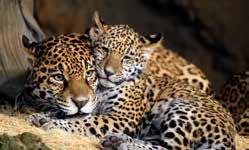
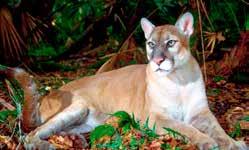
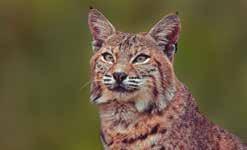
years later than the Canidae (wolfs and dog-like animals). Most of today’s living cats evolved due to migrations that occurred during the two major ice ages of the past ten million years. During these ice ages the sea levels dropped and land or ice bridges formed between continents - enabling animals to migrate to new territories and environments. During warmer periods these ice bridges or connections melted, the sea levels rose again and migratory animals became isolated from their original or founder populations. Isolated populations adapt over time to new environments and eventually become genetically distinct to the extent they evolve into new species. Speciation also occurred within continents whenever a group of animals become separated in some way from their founding population. For example, snow leopards evolved as they adapted to low temperatures at high altitudes and sand cats evolved as they adapted to the dry and extreme conditions of desert habitats. Inherently wild cats disperse and adapt readily to new environments, confirming the ability of this family of animals to spread and establish in new territories when such opportunity arise.
The Three Oldest Wild Cat Lineages
The last common ancestor of modern cats was a species of Pseudaelurus that occurred in Asia 9 to 20 million years ago. Using genetics scientists have established that modern cats diverged from this ancient species into eight groups or lineages of closely related species. The oldest cat lineage is the large roaring cats of the Panthera lineage that split from this common ancestor 10.8 million years ago. Descendants evolved into seven species which occur across all the continents of Asia, North and South America, Europe, and Africa as they migrated to and from Asia over time. The second lineage to branch off was the Bay Cat Lineage at 9.4 million years ago and three species evolved within South East Asia. The Caracal was the third lineage to branch off at 8.5 million years ago during the first ice age 8 to 10 million years ago, when its ancestors crossed the land bridges at the Red Sea from Asia to Africa where it split into three mid-sized cat species. During the same ice age, the Bering Strait land bridge formed between Asia and North America over which cats and other animals migrated spreading through North America and later into South America. These dispersals gave rise to the remaining five wild cat lineages, that all originated in North America. Ancestors of the Leopardus or Ocelot lineage originated 8.0 million years ago and initially evolved into two species in North America. Later during the second ice age of 2 - 3 million years ago the Panama land bridge between North and South America formed due to lower sea levels as well as continental shifts. The Leopardus lineage used this land connection to migrate to South America where the group diversified further into the seven species of today. The Lynx lineage branched off 7.2 million years ago and evolved into the distinctive lynx species with short tails and tufted ears. Two species spread through North America and a further two evolved later in Eurasia from ancestors that migrated back over the Bering Strait during the second ice age. The third lineage to originate in North America was the Puma lineage which appeared 6.7 million years ago. Today the group consists of three very diverse cat species namely the Cheetah, Puma and Jaguarundi. The Puma and Jaguarundi spread to South America during the second ice age, whereas the Cheetah used the Bering Strait to migrate back into Eurasia and ultimately into Africa. The last two ‘youngest’ lineages arose from ancestors that crossed back to Asia from North America during the second ice age. The Leopard Cat lineage split off 6.2 million years ago and today the resulting five species mainly occupy Southern and Central Asia. The Felis lineage, the youngest cat lineage, branched off about 3.4 million years ago, comprising mostly smaller cats under 10 kgs which in modern times includes the domestic cat. Some of the ancestral cats that moved back to Asia evolved there, whilst others spread into Europe and some even further into Africa.
Concluding remarks
The feline family can be found all over the globe except for the Arctic poles. On Australia, New Zealand, and several isolated coastal islands the domestic cat is an introduced species, which in many cases became irreversibly invasive. Everywhere else, felines have been a part of the natural fauna. Most cats are characterized by supple, lowslung bodies, finely moulded heads, long tails that aid in balance, and specialized teeth and claws that aid in an active hunting life. All felines are strictly carnivorous, remarkably agile, and powerful, and finely coordinated in movement. Unlike canines, cats are much more independent and tend to live a solitary life, meeting only for the reproduction phase of their lives. The well-known exception being the lion who live in groups and work together to hunt and survive. There are many species within the Felidae family that are at risk of extinction due to habitat loss, poaching, and illegal trading. Some are considered vulnerable, with numbers declining alarmingly over the past few decades. The domestic cat, on the other hand, has become a nuisance in some areas due to overpopulation and its ability to survive as feral cats in many areas. Their impact on sensitive species and environments could be substantial. References O’Brien, J. S. and Johnson, W. E. (2007). The evolution of cats. Scientific American July 2007: 68-75. Chart of Felidae Lineages and Genera. www.WildCatFamily.com Mark Hallett and John Harris (2020) On the Prowl - In Search of Big Cat Origins. Columbia University Press. Wikipediae. www.wikipedia.org
